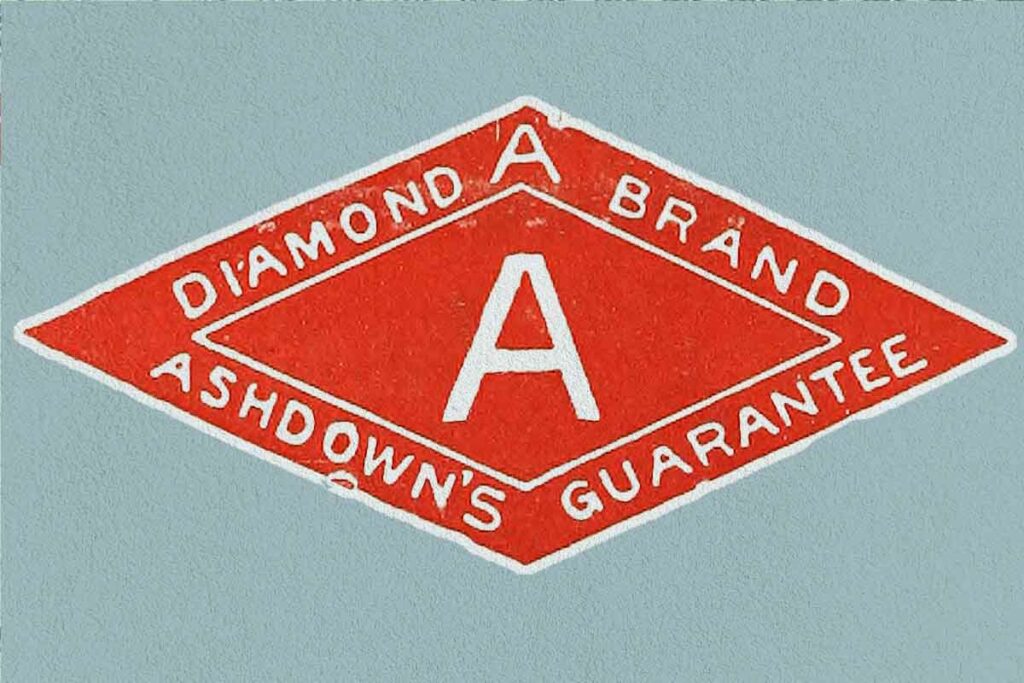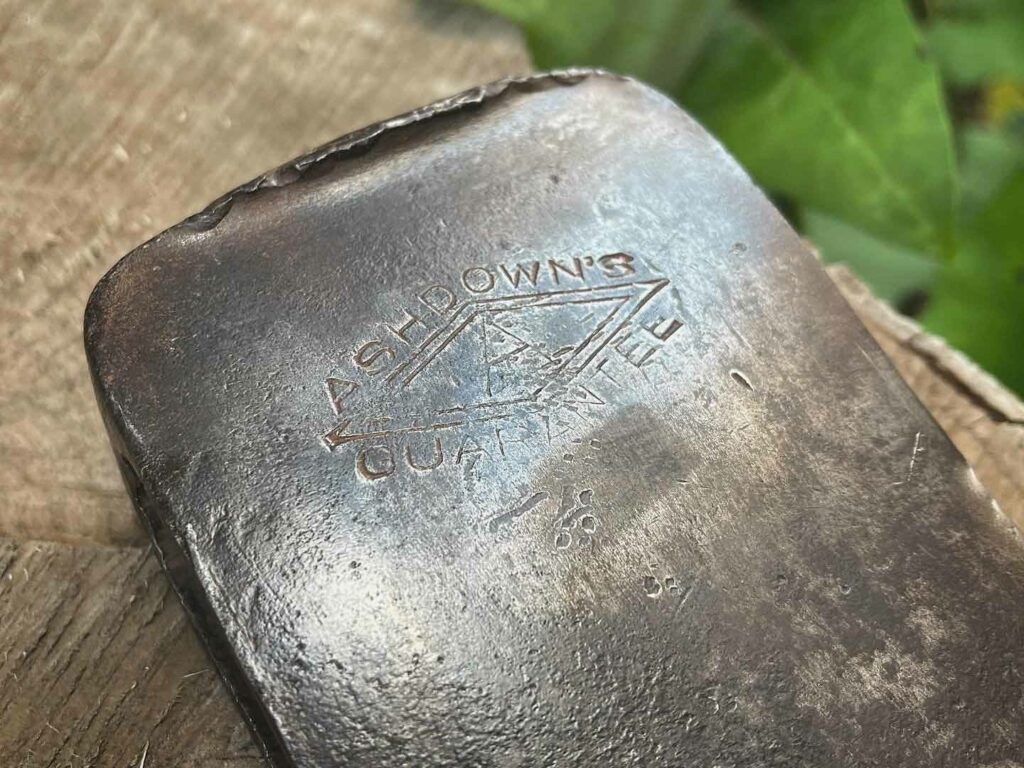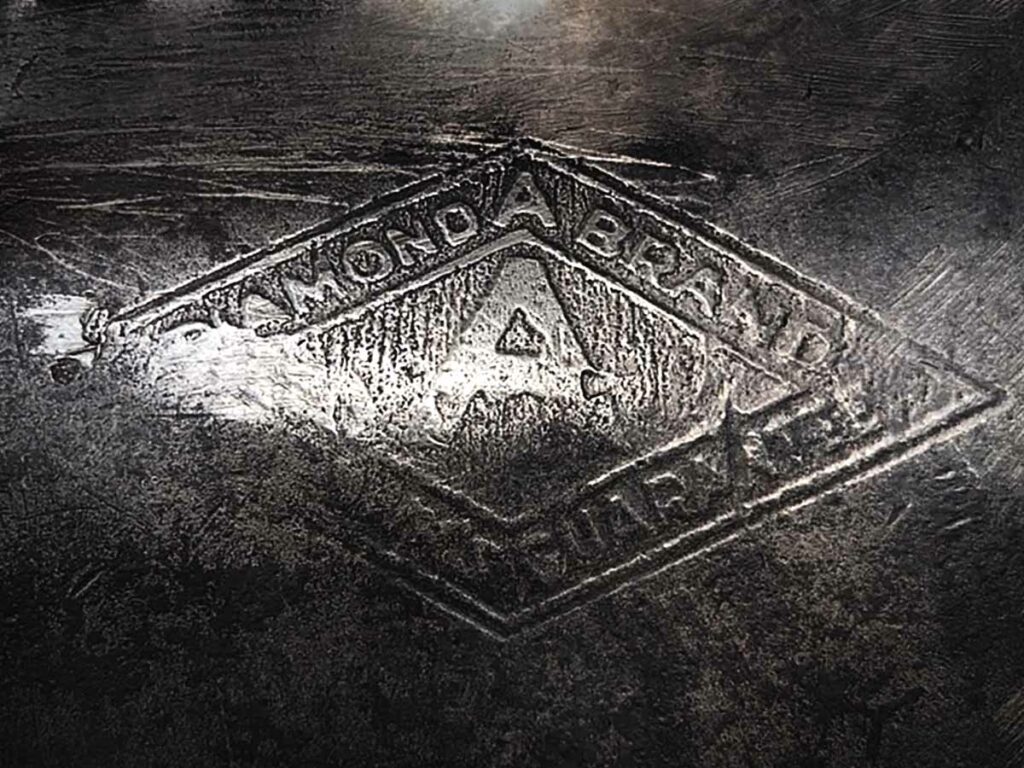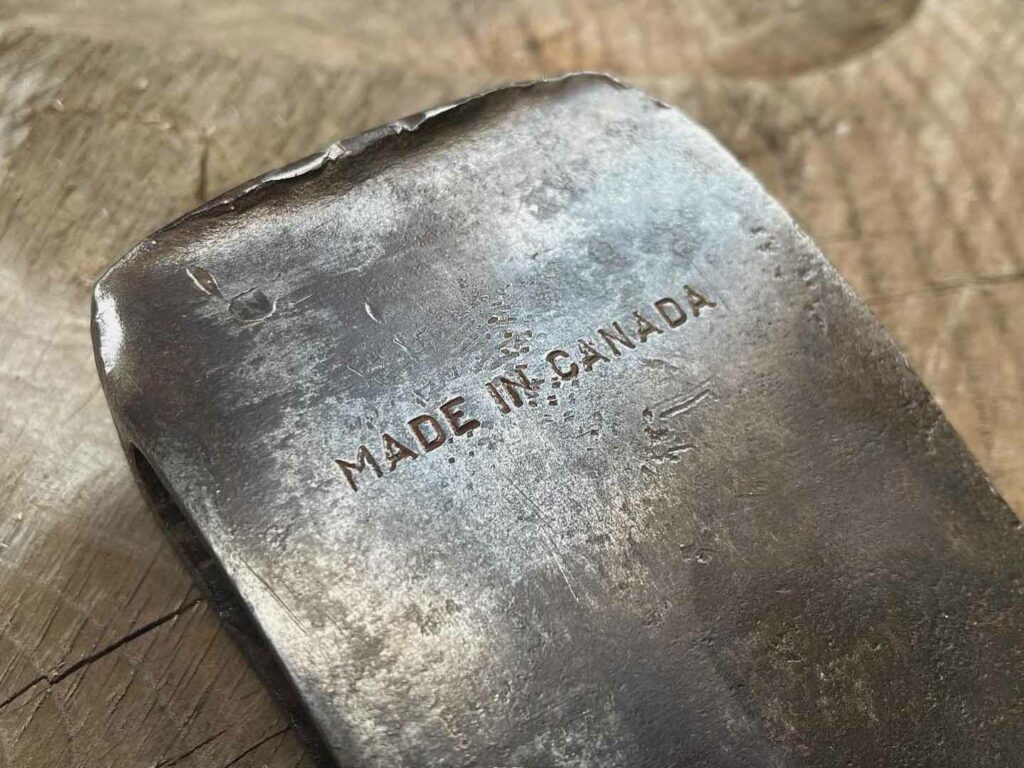Ashdown’s “Diamond A” Axe
1904 – 1940s*
Winnipeg, Manitoba
(Made in St. Catherines, ON)
The J.H. Ashdown Hardware Company was established on September 11, 1869, by James Henry Ashdown, a recent immigrant to Winnipeg. By 1871 he moved his hardware business to a new building, and it quickly grew further into a mixed wholesale and retail model. In 1902, the company was officially incorporated as the J.H. Ashdown Hardware Company Limited with the Province of Manitoba.
Seeing the potential for westward expansion, Ashdown operated both as a wholesaler to smaller shops across the west and opened a chain of large Ashdown Hardware stores across Canada, including locations in Portage la Prairie and Emerson (1881), Calgary (1889), Saskatoon (1912), Edmonton (1923), and Regina (1929).
After the death of J.H. Ashdown, in 1924, his son, Harry C. Ashdown, took over – running the business for another 46 years. Eventually, in 1970, the company was sold and liquidated after Harry Ashdown’s passing.
Ashdown’s Diamond “A” Brand

Ashdown’s was one of the first large Canadian Hardware Wholesalers to create a private label when they launched their “Diamond A Brand” in 1904. However, the brand didn’t pick up steam as a significant line until later in the decade, with national advertising beginning around 1911. The brand was quickly being used for all manner of tools and appliances including:
- Mechanics’ Tools
- Electric Light Plants
- Washing Machines
- Lead Pencils
- Wringers Churns
- Stoves and Ranges
- Cutlery
- Harvest Tools
- Water Supply Systems
- And of course Axes.
Ashdown’s Guarantee
Satisfaction is positively assured to all users of Diamond “A” Hardware. The quality is unequalled, the workmanship the best, the finish is exceptionally fine and the Ashdown Guarantee is back of every article branded Diamond “A.”
Advertisement – Hardware & Metal, August 1920
Satisfied customers become friends. When you sell Diamond “A” Brand Hardware you extend the circle of your friendship.
What’s interesting about Ashdown’s axes, is that they were not prioritized or advertised heavily compared to some of their competitors. National advertising of Diamond A products was reserved for Housewares, appliances, and harvest tools (which makes sense for a firm from the prairies).
Ashdown’s Diamond “A” Axes
It’s not known exactly when the brand was applied to axes. They were often an early product made by large firms as they were relatively low cost, high-traffic, and production easily contracted out.
Ashdown’s axes were made by Welland Vale Mfg Co. out of St. Catherines, Ontario. Welland Vale was one of the largest players in the axe business and is known to have made axes for multiple other companies (and is suspected of making many more).
Original Detailed Etching
Dates are not exactly clear, and there could have been paper labels used at the start, but this was the original etching used for Ashdown’s axe, and it was likely used into the 1920s. It features the full Diamond “A” logo, with the words “Diamond A Brand” on top and “Ashdown’s Guarantee” on the bottom.
Simplified Stamp
Axe designs started to simplify during the mid-late 1920s and early 1930s as a way to cut costs and streamline production. Most Ashdown’s axes you’ll find today have a simplified stamped version of the logo that says “Ashdown’s Guarantee” around a Diamond A.
This stamp can be found on single-bit and double-bit axes, as well as smaller boy’s axes. The full-size models often also include a second “Made in Canada” stamp on the opposite side, but it wasn’t added to the smaller boy’s axes.
This second stamp was likely also cut later in production, so if you find a full-size Ashdown’s axe without the “Made in Canada” – it was likely later production.
It’s not known when the Diamond A axes stopped being stamped, although most makers had switched entirely to paper labels by the 1940s. Cut cutting was important due to the rise of the chainsaw and constraints caused by the second world war.
80th Anniversary Ashdown Axes
A special axe was sold for Ashdown’s 80th Anniversary in 1949 with a custom paper label. The axe does not appear to have any form of stamp (although it could be under the label). An example on Worthpoint can be seen here.
After this axe was sold Ashdown’s may have switched back to selling national brands, as the market for axes was in free-fall with the domination of the chainsaw.
At the time of writing I have not seen any evidence of paper Ashdown labels used after this point (but that doesn’t mean they didn’t).
Help the site grow!
Did I get something wrong? Do you have one of these axes? Please share any pictures, information, or insights to help fill the archive. You can email: museum@axeandtool.com
Sources
- “Axe Makers of North America” by Allan Klenman (second edition – editor: Larry McPhail), 1990
- Yesteryearstools.com – Welland Vale Co.
- University of Manitoba Archives
- Thomas Fischer Rare Book Library, University of Toronto
– Hardware & Metal December 1919
– Hardware & Metal September 1919
– Hardware & Metal July 1911
– Hardware & Metal March 1911
– Hardware & Metal January 1905



